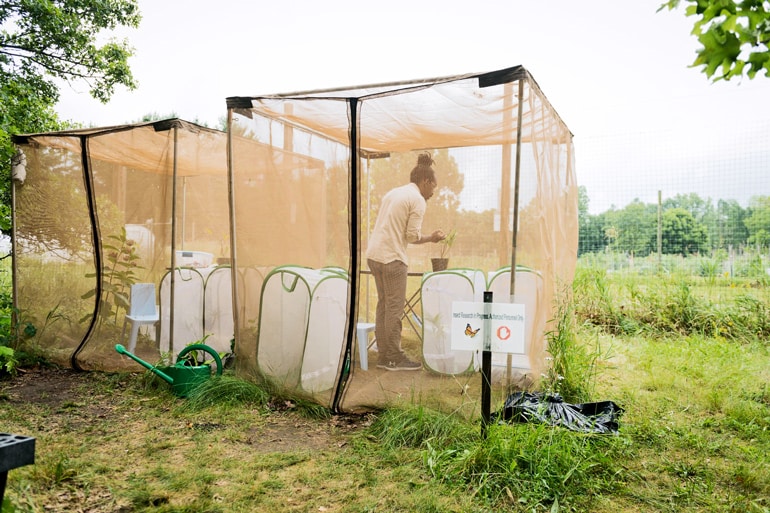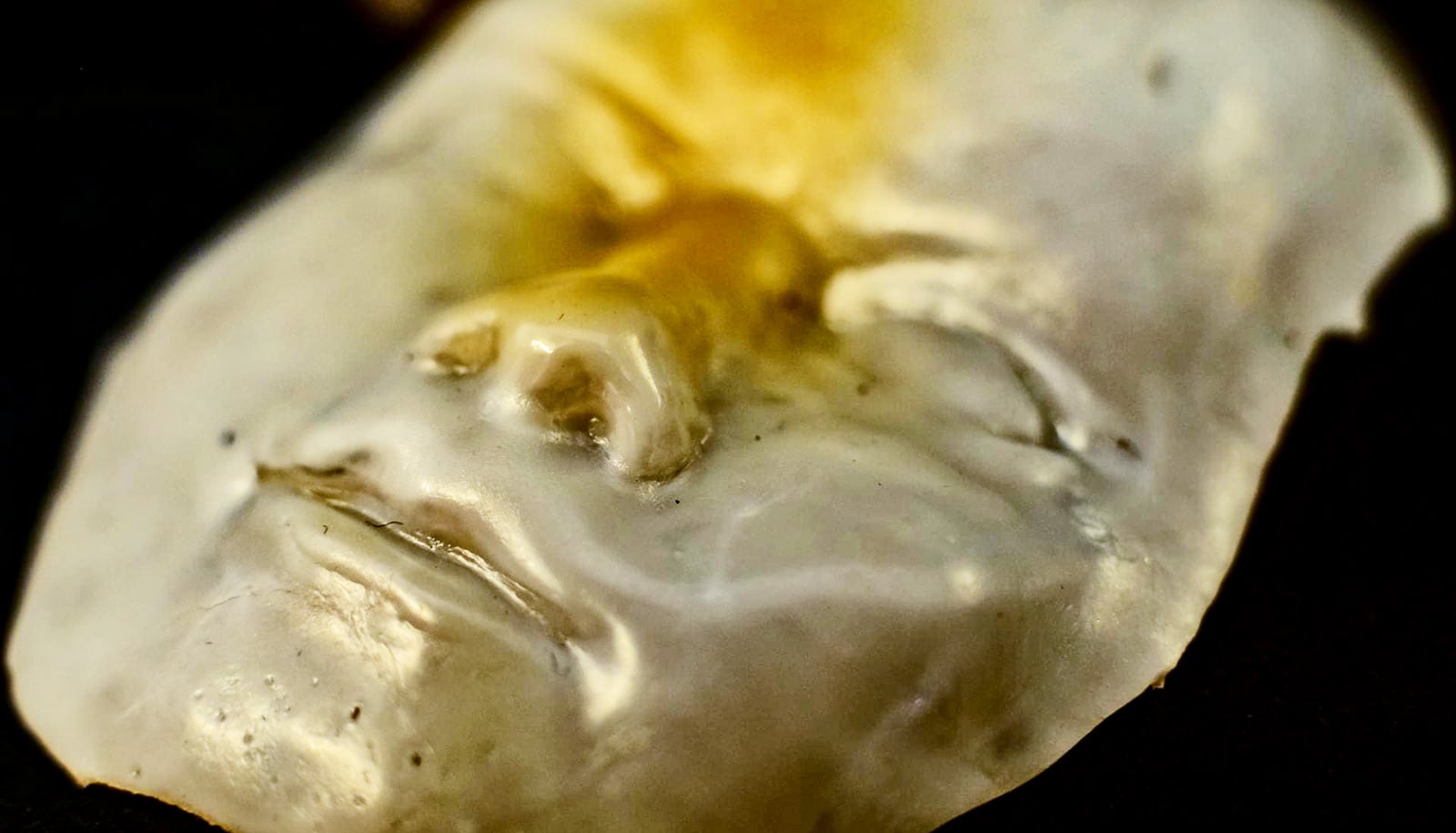
Biologist D. André Green holds a monarch butterfly in an outdoor insectary. Green studies monarch migration and the internal timer that tells the butterflies it’s time to wake from winter dormancy and prepare for their springtime journey northward. (Credit: Daryl Marshke/U. Michigan)
Monarch butterflies have heat-sensitive ‘timer’ for migration
When monarch butterflies are laying low down south for the winter, a temperature-sensitive timer preps them for the trip north.

Overwintering monarch butterflies rely on a temperature-sensitive internal timer to wake them up to make the trip back north, researchers report.
The fact that millions of North American monarch butterflies fly thousands of miles each fall and somehow manage to find the same overwintering sites in central Mexican forests and along the California coast, year after year, is pretty mind-blowing.
Once they get there, monarchs spend several months in diapause, a hormonally controlled state of dormancy that aids winter survival. Though diapause is not as obviously impressive as the celebrated annual migrations, it holds mysteries that have perplexed scientists who study biological timing.

Weeks before warming temperatures and longer days signal to the monarchs that it’s time to mate and begin spring’s northward migration, an internal timer goes off like an alarm clock to rouse the insects, telling them it’s time to end diapause and prepare for the critical upcoming events.
Studies in other organisms have shown that cold temperatures can influence the diapause-termination timer, and D. André Green, a postdoctoral fellow in the ecology and evolutionary biology department at the University of Michigan who began the work while at the University of Chicago, suspected the same is true for monarchs. His study at monarch overwintering sites in central California confirmed it, and his gene expression analyses help explain how cold temperature speeds up that internal timer.
Monarch butterflies in the winter
“These results are particularly interesting because they address a counterintuitive result: How does cold temperature, which normally slows down an organism’s metabolism and development, speed up diapause? This work is one of the first to provide insights into this question,” says Green,
The findings have important implications for North America’s monarchs—whose populations have declined steadily for decades at the overwintering sites—as the climate changes, Green and coauthor Marcus Kronforst of the University of Chicago write in a new study in Molecular Ecology.
“Understanding how diapause dynamics are affected by environmental and anthropogenic factors at their overwintering sites may be critical for understanding North American monarch population decline and guiding future conservation efforts, a point highlighted by the record low number of monarchs recorded in the western North American monarch population in 2018,” Green and Kronforst write.
The findings also suggest that monarchs will act as an important sentinel species for monitoring environmental change and disturbance at overwintering sites. If diapause ends too early, monarchs may lose some of the protective time the dormancy period provides.
Speeding up the timer
Green’s study involved capturing female monarch butterflies at overwintering sites in central California in November 2015, after they entered diapause. The live insects were brought back to the Chicago lab.
In an environmental chamber there, the researchers exposed butterflies to temperatures and day lengths approximating November in central California: 10 hours of light at 63 degrees Fahrenheit, followed by 14 hours of darkness at 50 degrees.
In December and again in January, Green’s team returned to the same overwintering sites, live-captured additional female monarchs, and shipped them to the lab. In the wild, those winter-caught butterflies also experienced short days, along with nighttime temperatures that dipped below 50 degrees.
Green then compared the reproductive maturity of the different groups by counting the number of eggs in each female. An abundance of mature eggs is an indication that the female has terminated diapause, while a paucity of mature eggs indicates that she is still in diapause.
“The monarchs collected from the wild in December showed increased reproductive development compared to the monarchs that had been in the laboratory since November,” Green says. “This indicated that an environmental condition in the wild—cold temperature—sped up the timer.”
As part of the same study, Green also analyzed gene expression in the different groups of monarchs to understand how the internal timer works. Results suggest that transient markings on histones—proteins around which DNA winds and that control gene expression—may act as a timing mechanism.
The results also show that calcium signaling in the butterfly’s head is key, potentially linking the accumulation of cryoprotectants during cold weather to the internal timer.
The National Science Foundation, the US Fish and Wildlife Service, and National Institutes of Health supported the study. Researchers collected wild monarchs on private property near Pismo Beach, California with permission of the landowners.
Source: University of Michigan
The post Monarch butterflies have heat-sensitive ‘timer’ for migration appeared first on Futurity.
Share this article:
This article uses material from the Futurity article, and is licenced under a CC BY-SA 4.0 International License. Images, videos and audio are available under their respective licenses.


